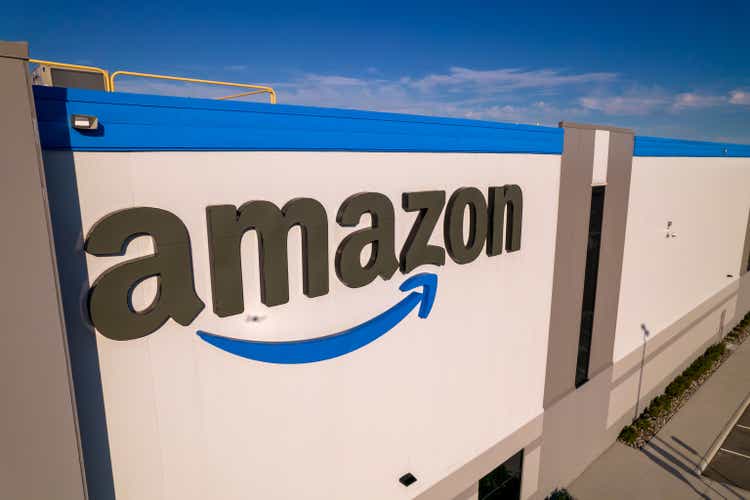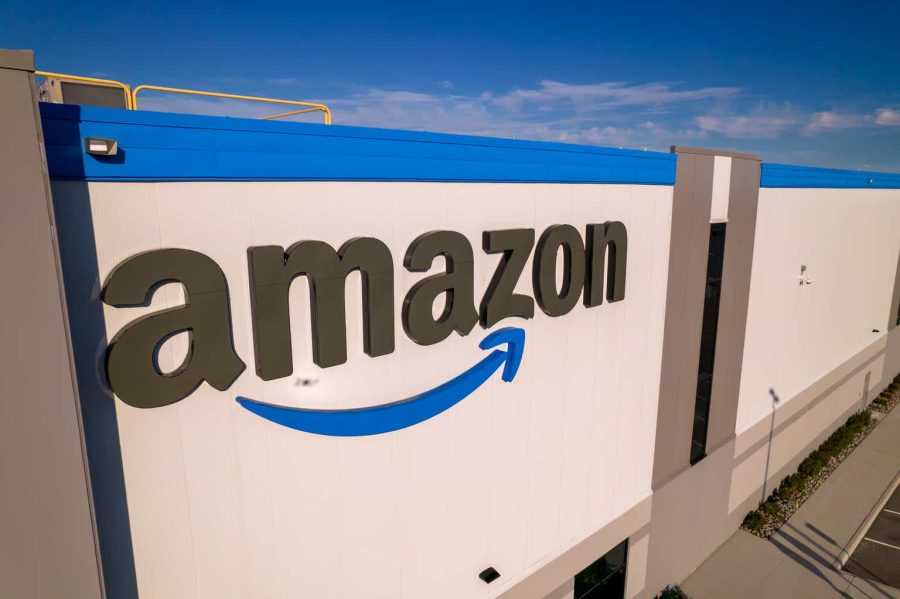Summary:
- Amazon’s continued expansion into streaming puts it in the same category as Apple and sets up a number of misleading comparisons to category leader Netflix.
- Trying to compare and contrast success between a company whose core business is streaming and a company whose core business is retail/product-driven is never going to be an apples-to-apples conversation.
- Amazon streaming positioning is largely a vanity play that helps supplement its main revenue stream, but it has purposefully kept both areas as clean and simple to use as possible.
- Amazon’s newest feature is a revamp to its streaming interface and shows users content only from the streaming services they subscribe to – which is something viewers overall have been requesting.
- The company has gone heavy into TV-content in recent years andit is smart to utilize the same simplistic approach to the medium as it has toits e-tail vertical.

tigerstrawberry
When analysts talk about the various FAANG (i.e Amazon, Apple, Netflix, etc) stocks they tend to focus on things that aren’t working with those companies.
It makes sense – negative stories get clicks. That said, one of the more common areas those stories tend to target is streaming. With all the chaos in the space the last few years and Netflix’s (NASDAQ:NFLX) ever-increasing turnaround from its pre-ad tier days, it is an easy aspect to attack.
The theory is essentially nobody will catch Netflix so the common theme is anybody who tries is on a fool’s errand.
Except that’s not the case and the fool’s errand is really trying to draw an apples-to-apples comparison between Netflix and any of its streaming rivals… specifically Apple (NASDAQ:AAPL) and Amazon (NASDAQ:NASDAQ:AMZN). Of all the big streaming players, Netflix is (and will likely remain) the only one that is a full-time streaming company.
For everyone else, this is a vanity play side hustle at a high level.
That’s important to remember as it changes what is and is not considered a “win.”
And in Amazon’s case it continues to go about that hustle in a very calculated way that ties back into one of the company’s trademark practices… simplicity.
First as always, some background.
Before I dive into Amazon, I wanted to touch on Apple because of something that happened the other week that speaks to how these companies operate differently in the space.
The studio released Fly Me To The Moon, a new movie fronted by Channing Tatum and Scarlett Johansson. The romantic comedy never got off the ground with just over $9 million at the box office and right now $16 million domestically and $31 million globally.
It cost $100 million.
And yet you probably haven’t heard about it that much in the press.
Whereas say if the latest Disney, WB or Universal movie under-performed that bad you could see the wagon’s circling for miles.
That’s the point. For Apple, it’s more interested in having that theatrical connection than first-look windows on its service. They see that theatrical run as marketing for their service. Yes, it’s costly marketing, but for a company worth over $3 trillion, do you think $100 million matters as much?
What about $200 million?
That’s the cost Argylle and Killers of the Flower Moon which both failed to come close to that number globally.
Again… vanity play.
Argylle had big names attached and Moon was an awards play that achieved its purpose by getting nominated for multiple Oscars.
Again, extra marketing and exposure.
For Apple having names like Tatum, Johansson, DiCaprio and Scorsese associated with their service is a win. The company has been playing the long game from go and given it is the only streamer to have won a Best Picture Oscar (for CODA), they’ve basically proved their point.
Yes CODA cost nowhere near $100 million, but it’s not about the money, it’s about the prestige.
Audiences see these “big” movies advertised now and will check them out when they come to Apple TV+ later… the average viewer couldn’t care less how much money something made before coming to their device.
That is also something Amazon is aware of as in many cases they aren’t going to make a ton of $100 million+ pictures…for them the Manchester By The Sea, The Boys In The Boat and Air route is their comfort level.
And by the way – all of those were well received by critics/audiences and none of which sported massive budgets.
That’s because Amazon’s secret sauce is simplicity… it always has been.
And that stretches across its core e-tailer business as well. Easy access to every product EVER as well as free two-day (and in some cases one-day) shipping has helped them become a dominant player in today’s culture.
The convenience factor is a big part of Amazon’s success.
The company continues to evolve that simplicity whenever it gets the chance. Case-in-point this week’s news around its new video interface that helps cut through the clutter that most streaming platforms seem content to keep.
Now Prime Video users can expect a more personalized experience that not only features a simple navigation system but it will show you only content from services from which you are subscribed. So, if you use Amazon Fire as your streaming homebase and subscribe to (for example) Prime, Max and Crunchyroll, you’ll only see content from those services. Previously you saw EVERYTHING from every service which only made choosing what to watch more complicated.
Yes, its a small thing, but its an important thing as well as that is something users in the space have been asking about for some time.
“We’re always listening to customers and reviewing feedback, and it’s clear that many are in search of a more intuitive streaming experience.” – Kam Keshmiri, Prime Video’s vice president of design
The company is actually listening to its subscribers… I know, such a radical concept.
Netflix has also been testing the waters with its interface and neither company will be the last to “evolve” their menus, but the “how” is important. Users don’t want to be bombarded by content, they want a simplistic experience to find what they want to watch.
And to be clear simple doesn’t always have to be cheap.
While Prime Video doesn’t always go BIG on movies, it does go BIG on TV.
From The Terminal List to Fallout to The Lord of the Rings: The Rings Of Power it tends to spare no expense on these productions. Part of that though is because unlike Netflix’s “batch” model, Amazon will gradually role out its series over a period of weeks ensuring its audience doesn’t churn-and-burn as fast if they did all-at-once.
To Amazon TV shows seem to be better investments especially since their approach mirrors the less hectic “all at once” race to finish style Netflix tried to make the norm.
And last year those investments resulted in 68 Emmy nominations including two for Best Comedy series (The Marvelous Mrs. Maisel, Jury Duty) – remember Maisel was the first streaming comedy to win that category at the Emmys.
If you want to argue awards mean nothing, go ahead… but Amazon, Apple and Netflix seem to think otherwise.
Prime continued that success this year with another 60+ nomination year capped off by two Best Drama series nominations (Fallout and Mr. & Mrs. Smith). While less overall than last year, that number is important because these are NEW shows that have successfully replaced older ones. You’ll remember Maisel has wrapped and Jury Duty was really a one-and-done type concept.
This shows audiences are continuing to invest in Amazon programming… and to be clear that programming won’t always work. Lord of the Rings: The Rings of Power was the most expensive show ever produced and not only did it not have the warmest reaction, it was snubbed at the Emmys.
In a number of ways the basic reason it under-performed was the show was heavily genre based and presented a high barrier to entry for new fans. It served its purpose and raised Prime Video’s profile, but there was a higher level expectation that never materialized.
To put it in other terms – it wasn’t the Game of Thrones level hit Amazon was hoping for, but it wasn’t a Vinyl level under-performer either that ultimately stung HBO.
Prime Video (like Apple) is a different beast from Netflix… it always has been and always will be. It has its spot in the market and it is at its best when it isn’t trying to be too much.
If it sees something is working, it will keep supporting it.
The point is that with streaming nothing is as it appears on the surface and investors need to do their own deep dive into this space (or any they want to invest in). It is easy to lose track of who’s “winning,” especially since all the players are running their own race.
The best advice… keep it simple.
Analyst’s Disclosure: I/we have no stock, option or similar derivative position in any of the companies mentioned, and no plans to initiate any such positions within the next 72 hours. I wrote this article myself, and it expresses my own opinions. I am not receiving compensation for it (other than from Seeking Alpha). I have no business relationship with any company whose stock is mentioned in this article.
Seeking Alpha’s Disclosure: Past performance is no guarantee of future results. No recommendation or advice is being given as to whether any investment is suitable for a particular investor. Any views or opinions expressed above may not reflect those of Seeking Alpha as a whole. Seeking Alpha is not a licensed securities dealer, broker or US investment adviser or investment bank. Our analysts are third party authors that include both professional investors and individual investors who may not be licensed or certified by any institute or regulatory body.
